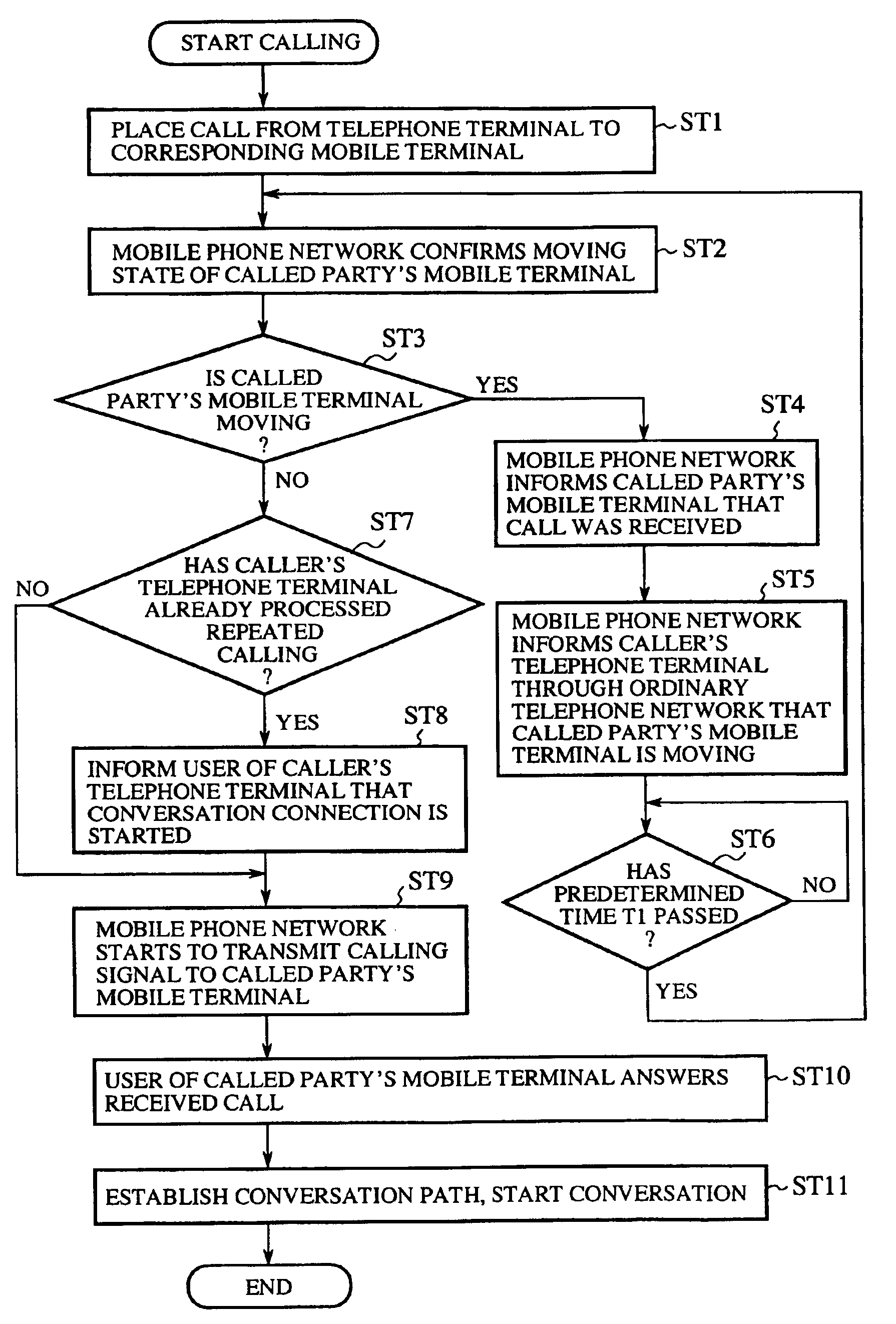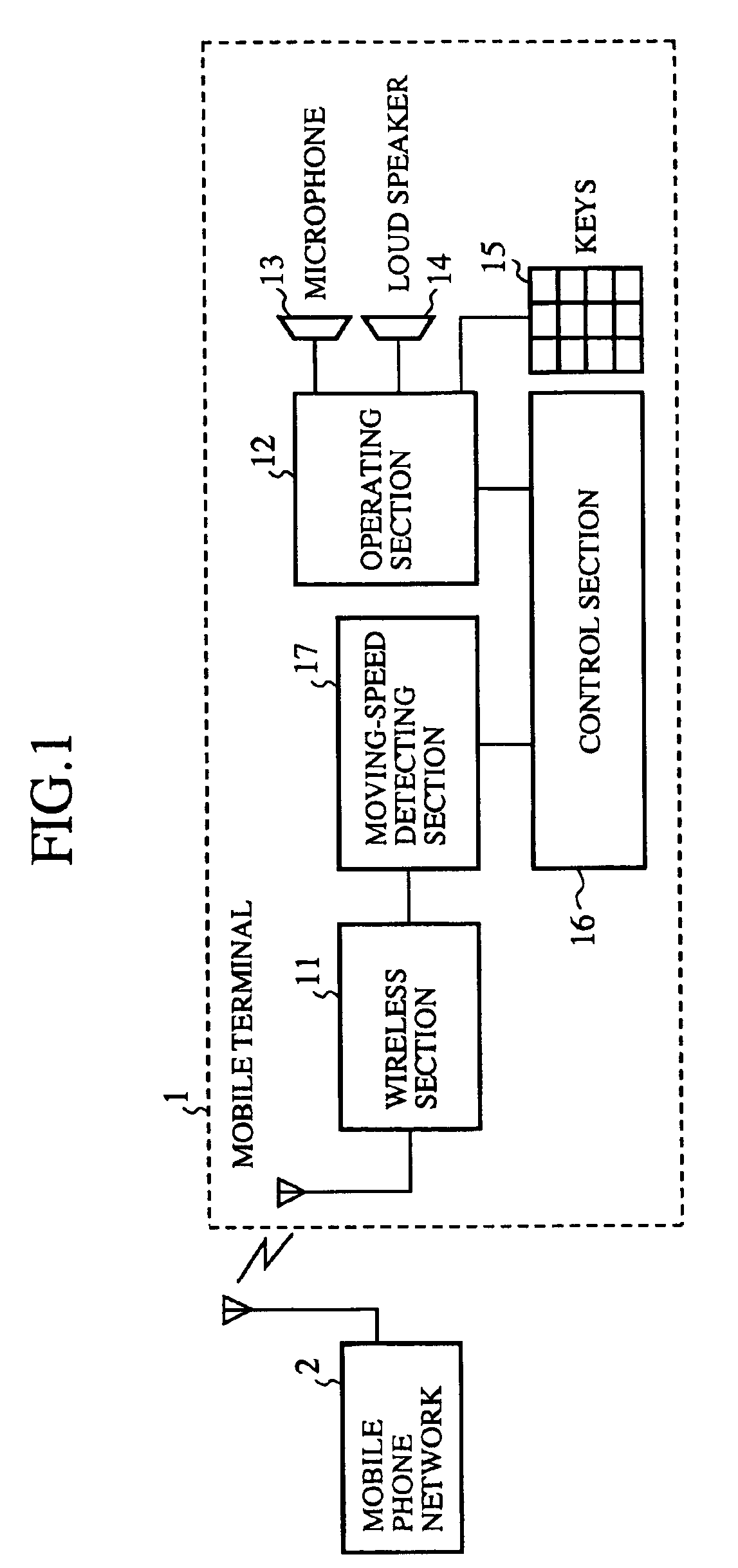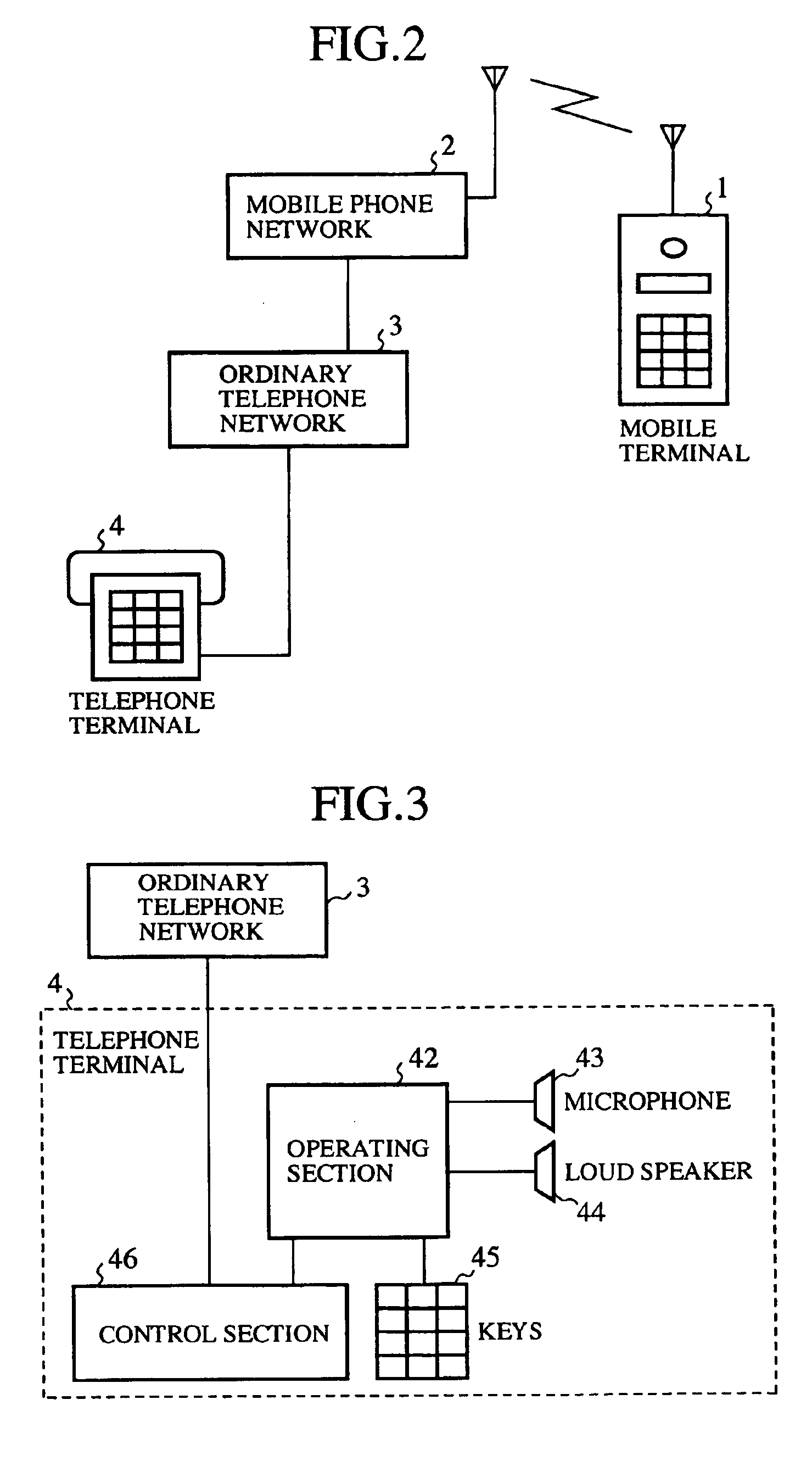Mobile telephone system configured to confirm receiver speed conditions
a mobile telephone system and speed condition technology, applied in the field of telephone systems, can solve problems such as the inability to conduct the conversation as soon as possible in an emergency cas
- Summary
- Abstract
- Description
- Claims
- Application Information
AI Technical Summary
Benefits of technology
Problems solved by technology
Method used
Image
Examples
first embodiment
[0035]FIG. 2 is a block diagram showing an arrangement of a telephone system according to a first embodiment of this invention. In the figure, reference numeral 1 denotes a mobile terminal, reference numeral 2 denotes a mobile phone network for making a communication with the mobile terminal, reference numeral 3 denotes an ordinary telephone network, and reference numeral 4 denotes a telephone terminal which is connected to the ordinary telephone network 3. The mobile terminal 1 has the same arrangement as that of the conventional one as shown in FIG. 1 and is provided with a moving-speed detector section 17. It is to be understood that the mobile phone network 2 includes: base stations for directly transmitting to and receiving from the mobile terminal 1; a mobile telephone switching station for performing interconnecting services with the base station; and a gate mobile telephone central station for performing interconnection with the ordinary telephone network 3.
[0036]FIG. 3 is a...
second embodiment
[0052]The arrangement of the telephone system according to a second embodiment is the same as that shown in FIG. 2 of the first embodiment. The arrangement of the mobile terminal 1 is the same as that of the conventional one shown in FIG. 1, and the arrangement of the telephone terminal 4 is the same as that shown in FIG. 3 of the first embodiment.
[0053]A description will now be made about the operation.
[0054]FIG. 5 is a flow chart showing the flow of processing in the telephone system according to the second embodiment of this invention. The processing from step ST1 through step ST4 is the same as that shown in FIG. 4 of the first embodiment. In this embodiment, after the processing in step ST4, the mobile phone network 2 waits in step ST21 for a predetermined period of time T1. Thereafter, the process proceeds to step ST2 to thereby confirm the moving state of the called party's mobile terminal 1 once again.
[0055]Then, in step ST3, if the called party's mobile terminal 1 is found ...
third embodiment
[0061]The arrangement of the telephone system according to a third embodiment is the same an that shown in FIG. 2 of the first embodiment, and the arrangement of the telephone terminal 4 is the same as that shown in FIG. 3 of the first embodiment.
[0062]FIG. 6 is a block diagram showing an arrangement of the called party's mobile terminal 1 and the mobile phone network 2 according to the third embodiment. In the above-described first embodiment and second embodiment, the mobile terminal 1 is provided with the moving-speed detector 17. In this embodiment, on the other hand, the mobile phone network 2 is provided with a moving-speed detector 31 for detecting the moving speed of each of the mobile terminals 1.
[0063]A description will now be made about the operation.
[0064]The flow chart showing the flow of processing the telephone system according to the third embodiment is the same as that shown in FIG. 4 of the first embodiment or that shown in FIG. 5 of the second embodiment. Basicall...
PUM
 Login to View More
Login to View More Abstract
Description
Claims
Application Information
 Login to View More
Login to View More - R&D
- Intellectual Property
- Life Sciences
- Materials
- Tech Scout
- Unparalleled Data Quality
- Higher Quality Content
- 60% Fewer Hallucinations
Browse by: Latest US Patents, China's latest patents, Technical Efficacy Thesaurus, Application Domain, Technology Topic, Popular Technical Reports.
© 2025 PatSnap. All rights reserved.Legal|Privacy policy|Modern Slavery Act Transparency Statement|Sitemap|About US| Contact US: help@patsnap.com



